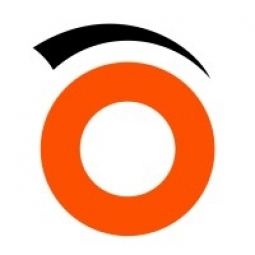公司规模
Large Corporate
地区
- America
国家
- United States
产品
- Zenoss as a Service (ZaaS)
- Amazon Web Services (AWS)
技术栈
- Linux
- Windows servers
- Cisco UCS
- Cisco networking
- Virtualized storage devices
实施规模
- Enterprise-wide Deployment
影响指标
- Productivity Improvements
- Cost Savings
技术
- 基础设施即服务 (IaaS) - 云计算
- 平台即服务 (PaaS) - 连接平台
适用行业
- 教育
适用功能
- 商业运营
服务
- 云规划/设计/实施服务
- 系统集成
关于客户
马里兰大学学院 (UMUC) 是一家一流的远程教育机构,为全球 95,000 名学生提供服务。该机构在三大洲设有五个数据中心,托管所有远程教育 IT 基础设施。该机构的 IT 基础设施经常被学生大量使用,例如在每周作业或考试截止日期前的周日晚上,或在评分期结束时。这导致 UMUC 的传统学习管理系统 (LMS) 和一系列第三方应用程序出现容量问题。除此之外,UMUC 还拥有其他内部系统,支持从文档管理到人力资本管理的所有工作。
挑战
马里兰大学学院 (UMUC) 是一家一流的远程教育机构,为全球 95,000 名学生提供服务。他们在三大洲设有五个数据中心,运行着大约 1,500 个硬件系统。由于学生往往会频繁使用系统,UMUC 的传统学习管理系统 (LMS) 和一系列第三方应用程序存在容量问题。由于有其他内部系统支持从文档管理到人力资本管理的所有内容,UMUC 显然需要一个统一的监控平台。UMUC 缺乏对影响最终用户的问题的可见性,因此 UMUC IT 员工在许多情况下完全不知道服务中断。即使知道,他们仍然难以确定基础设施中发生问题的确切位置。
解决方案
2012 年,UMUC 采用了新的云优先 IT 战略,包括首先采用供应商提供的 SaaS 技术,然后将其自身全球数据中心的基础设施过渡到 AWS,只在本地保留必要的基础设施组件。为了扩展 IT 运营、统一监控并实现更顺畅的云过渡和用户体验,UMUC 决定采用 Zenoss-as-a-Service (ZaaS),即 Zenoss Service Dynamics 的云托管版本。ZaaS 为 UMUC 的整个 IT 基础设施提供了统一的性能和可用性监控以及事件管理。UMUC 已能够将其 97% 的物理基础设施迁移到 AWS。他们对 ZaaS 的使用有助于确保在过渡到云之前、期间和之后的无缝运营。ZaaS 允许 UMUC 持续监控其混合基础设施的运行状况,并在整个过程中根据需要移动数据收集器。
运营影响
数量效益

Case Study missing?
Start adding your own!
Register with your work email and create a new case study profile for your business.
相关案例.

Case Study
Revolutionizing Medical Training in India: GSL Smart Lab and the LAP Mentor
The GSL SMART Lab, a collective effort of the GSL College of Medicine and the GSL College of Nursing and Health Science, was facing a challenge in providing superior training to healthcare professionals. As clinical medicine was becoming more focused on patient safety and quality of care, the need for medical simulation to bridge the educational gap between the classroom and the clinical environment was becoming increasingly apparent. Dr. Sandeep Ganni, the director of the GSL SMART Lab, envisioned a world-class surgical and medical training center where physicians and healthcare professionals could learn skills through simulation training. He was looking for different simulators for different specialties to provide both basic and advanced simulation training. For laparoscopic surgery, he was interested in a high fidelity simulator that could provide basic surgical and suturing skills training for international accreditation as well as specific hands-on training in complex laparoscopic procedures for practicing physicians in India.

Case Study
IoT platform Enables Safety Solutions for U.S. School Districts
Designed to alert drivers when schoolchildren are present, especially in low-visibility conditions, school-zone flasher signals are typically updated manually at each school. The switching is based on the school calendar and manually changed when an unexpected early dismissal occurs, as in the case of a weather-event altering the normal schedule. The process to reprogram the flashers requires a significant effort by school district personnel to implement due to the large number of warning flashers installed across an entire school district.

Case Study
Implementing Robotic Surgery Training Simulator for Enhanced Surgical Proficiency
Fundacio Puigvert, a leading European medical center specializing in Urology, Nephrology, and Andrology, faced a significant challenge in training its surgical residents. The institution recognized the need for a more standardized and comprehensive training curriculum, particularly in the area of robotic surgery. The challenge was underscored by two independent studies showing that less than 5% of residents in Italian and German residency programs could perform major or complex procedures by the end of their residency. The institution sought to establish a virtual reality simulation lab that would include endourological, laparoscopic, and robotic platforms. However, they needed a simulator that could replicate both the hardware and software of the robotic Da Vinci console used in the operating room, without being connected to the actual physical console. They also required a system that could provide both basic and advanced simulation training, and a metrics system to assess the proficiency of the trainees before they performed surgical procedures in the operating theater.

Case Study
Edinburgh Napier University streamlines long-distance learning with Cisco WebEX
• Geographically dispersed campus made in-person meetings costly and inconvenient.• Distance-learning programs in Malaysia, India, and China required dependable, user-friendly online tools to maximize interaction in collaborative workspaces.• Virtual learning environment required a separate sign-in process, resulting in a significant administrative burden for IT staff and limited adoption of collaboration technology.

Case Study
8x increased productivity with VKS
Before VKS, a teacher would spend a lot of time showing a group of 22 students how to build a set of stairs within a semester of 120 hours. Along with not leaving the teacher much time to provide one-on-one support for each student to properly learn carpentry, it also left a considerable amount of room for error. Key information would be misinterpreted or lost as the class was taught in the typical show-and-tell way.

Case Study
Scalable IoT Empowering GreenFlex's Sustainable Growth
GreenFlex, a company that supports sustainable development, decarbonization, and energy efficiency, faced several challenges in its quest to expand its business. The company needed to deploy a robust and sustainable IoT technology to support its growth. It was crucial for them to monitor and control devices at customer sites in a safe and reliable manner. They also needed to integrate devices across a range of communication protocols and gather and act on data to meet efficiency targets. GreenFlex had previously built IoT capabilities into its digital platform, GreenFlexIQ, to monitor and manage customer sites remotely. However, they soon realized that they needed a new platform to support their ambitions. They needed a platform that could scale to connect more devices for production management and make it easier for the operations team to manage devices in the field.







